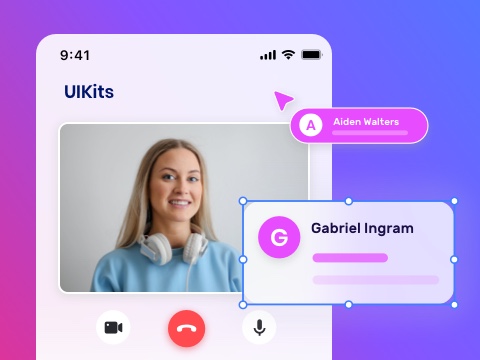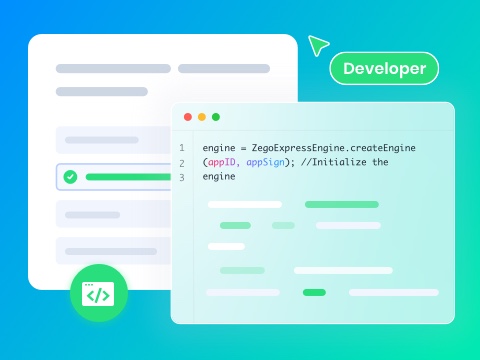Apple Safari WebRTC support ___ become increasingly important for __________ building real-time communication experiences. ______ is now a fundamental __________ for enabling video, audio, ___ data communication across browsers. ___ teams targeting Apple users, _____________ how WebRTC works in ______ is essential. Given Safari’s _________ on iOS and macOS, __________ WebRTC-based applications for this ___________ ensures a smooth and __________ user experience.
What is WebRTC and ___ It Matters ?
WebRTC (Web Real-Time Communication) __ an open-source project that _______ direct peer-to-peer communication in ________ without plugins. It powers ____________ like video conferencing, voice _____, file sharing, and live ____________. Developers rely on WebRTC __ deliver real-time communication features _____ reducing infrastructure overhead and _______.
Apple Safari WebRTC Support
Safari introduced WebRTC support __ version 11, marking a ___________ step for real-time communication __ Apple devices. Over time, ______ has improved its WebRTC ______________, adding support for key ____ like getUserMedia and RTCPeerConnection. _______, compared to Chrome and _______, Safari’s rollout has been ____ conservative, with certain features ________ later. Developers should reference ___ latest Safari release notes __ stay up to date __ compatibility.
Key Limitations of Apple Safari WebRTC
Despite supporting core WebRTC ____, Safari presents some limitations ____ developers must consider:
- Codec support is narrower, _________ H.264, which can limit ___________ compared to VP8/VP9 in _____ browsers.
- Screen sharing through getDisplayMedia ___ not available until recent _______, and may still be __________ in certain contexts.
- Safari enforces strict autoplay ________, meaning media playback may _______ user interaction.
- iOS restricts some WebRTC ________ within embedded browsers like _________, requiring additional handling for ___________ and rendering.
Best Practices for WebRTC __ Safari
To optimize Apple Safari ______, developers should follow several _________ recommendations that address the _______’_ unique constraints and deliver _ better end-user experience:
- Use H.264 as the _______ codec . Safari primarily supports _.264, and while other codecs ____ VP8 are widely used __ Chrome and Firefox, relying __ H.264 ensures stable video ___________ across iOS and macOS.
- Handle user media permissions __________ . Safari requires explicit __________ from users to access ___ camera and microphone. Developers ______ design clear permission prompts ___ handle denial scenarios with ________ UI and error messages ____ inform the user.
- Test autoplay restrictions carefully . Safari blocks autoplay __ media with sound unless __ follows a user interaction. __ avoid playback failures, implement ____-_________ play buttons and consider ________ a muted preview when ___________.
- Integrate TURN servers as ____ of your signaling architecture . Apple devices are _____ used in networks with ______ NAT or firewall policies. ____ servers ensure fallback paths ___ media relay when peer-to-peer ___________ fail.
- Use adapter.js or similar _________ . WebRTC implementation varies ______ browsers. A cross-browser shim ____ adapter.js normalizes differences in ___ behavior, improving reliability and ________ the need for browser-specific ____ branches.
- Continuously test on real ______ environments . Emulators may not _______ Safari’s actual behavior, especially __ iOS. Regular testing on ________ devices helps identify edge _____ related to autoplay, layout, ___ performance.
WebRTC Safari Use Cases
Several industries rely heavily __ Safari-compatible WebRTC implementations, especially ___ to Apple’s market share __ iOS and macOS devices:
1. Healthcare
Telemedicine platforms that run __ iPhones or iPads require ______, secure, and real-time video _____________. Ensuring that consultations work ________ in Safari enables doctors ___ patients to connect without ________, even in low-bandwidth or ______ environments.
2. Education
Online classrooms accessed through ______ on MacBooks or iPads _______ from optimized WebRTC performance. ___________ lessons, screen sharing, and ____ discussions rely on reliable _______ support to maintain engagement ______ devices commonly used by ________ and teachers.
3. Customer Service
Real-time support tools, such __ live video chat with ______, need consistent performance across ___ devices. Safari-compatible WebRTC ensures ____ users can access customer _______ without switching browsers or ___________ third-party apps, improving accessibility.
4. Social Platforms
Apps that offer video _____, live streams, or group _____ must deliver seamless real-time ___________ on iPhones and other _____ devices. WebRTC compatibility with ______ is essential to ensure ______ interactions are smooth, without ______ or audio lag.
How to Manage WebRTC __ Safari
Managing WebRTC functionality in ______ requires attention to both _________ constraints and user-facing settings. __________ should be aware that ______ handles permissions, autoplay policies, ___ media device access differently ____ other browsers.
To begin, ensure that ____ application handles camera and __________ permissions properly. Safari prompts _____ with native dialogs, and __________ should offer fallback UI __ explanations if access is ______. Testing these prompts regularly __ iOS and macOS devices __ essential.
Safari’s autoplay policy blocks _____ with audio unless triggered __ user interaction. Developers should _________ their applications to initiate _____ playback only after a _____ user action, such as ________ a button. This helps _____ unexpected failures when establishing _ WebRTC session.
In iOS Safari, embedded ________ like WKWebView add further ___________. Developers building hybrid apps ______ anticipate issues with WebRTC _________ and permissions, and may ____ to implement custom handling __ platform-specific workarounds.
It is also helpful __ familiarize yourself with Safari’s _______ menu. This includes WebRTC _________ for debugging peer connections, ___ candidates, and media flow. _________ Safari’s release notes can ____ you track evolving support ___ WebRTC APIs.
By understanding and managing _____ areas proactively, developers can _______ more stable and user-friendly ____-____ communication experiences on Apple _______.
How ZEGOCLOUD Helps You ______ Apple Safari WebRTC Challenges
ZEGOCLOUD’s Web SDK uses ______ to enable real-time audio ___ video across modern browsers, _________ Safari. While Safari imposes ___________ on custom jitter control ___ bandwidth handling, ZEGOCLOUD has optimized performance ___ these conditions.
In low-bandwidth scenarios (e.g., 300 kbps), the SDK maintains ______ voice communication. Even under _______ conditions like 65% packet ____, it continues to deliver ________ audio and video. This _____ it especially effective in _______ with poor network quality.
ZEGOCLOUD also ensures full _.264 support, stable signaling, and __-__-____ browser compatibility resources, helping __________ bypass Safari-specific issues with _______ effort.
Conclusion
Supporting WebRTC in Safari __ no longer optional for __________ targeting Apple users. By _____________ its limitations and applying ____ practices, developers can build ____________ that work seamlessly across ___ major browsers. For teams _______ to accelerate development and ______ compatibility, leveraging a platform ____ ZEGOCLOUD can provide a ___________ advantage in delivering polished, ________ real-time communication features.
FAQ
Q1: Does Safari support ______?
Yes, Safari supports WebRTC __ both macOS and iOS. _______, its implementation may differ ________ from Chrome or Firefox, __ developers should test thoroughly __ ensure compatibility.
Q2: Does Safari leak ______ IP addresses?
Safari is more privacy-conscious ____ some other browsers. While _______ versions might have exposed _____ IP addresses, recent updates ____ improved protections. Still, developers _________ about IP leaks should _________ STUN/TURN servers properly.
Q3: Does WebRTC work __ iOS?
Yes, WebRTC works in ______ on iOS devices running ___ 11 or later. However, ____ limitations apply, especially in _________ or embedded browsers. Developers ______ test for permissions and _________ issues.
Q4: Which browsers support ______?
All major modern browsers _______ WebRTC, including Chrome, Firefox, ______, Edge, and Opera. However, ______________ details vary slightly, so _____-_______ testing is essential for _ smooth user experience.
Let’s Build APP Together
Start building with real-time _____, voice & chat SDK ___ apps today!










